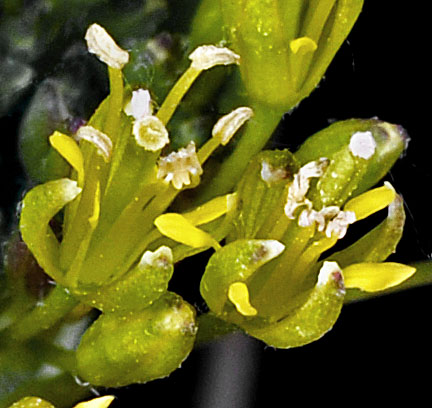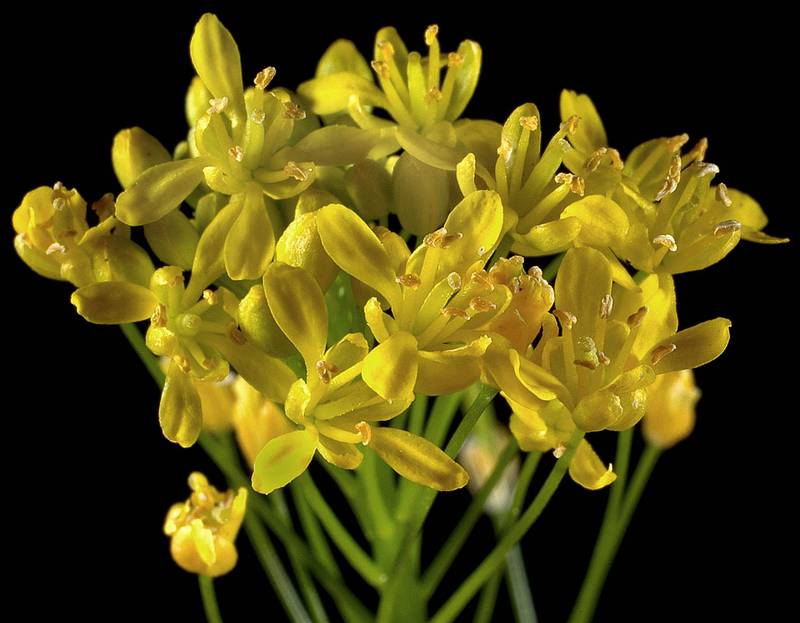Descurainia sophia
Descurainia pinnata
flixweed
western tansymustard
Leaves alternate, mainly cauline, numerous, 2-10 cm. long, oblong-ovate to oblanceolate, repeatedly compound into linear segments 1 mm. long.
Leaves alternate, mainly cauline, broadly lanceolate to oblanceolate, the lower petiolate, 3-10 cm. long, bipinnate-pinnatifid to pinnate-pinnatifid, somewhat toothed, the segments linear or a little broader; upper leaves reduced, usually pinnatifid into linear segments.
Inflorescence of bractless racemes that are often half the length of the plant; pedicles slender, about 10 mm. long;
sepals 4, spreading, 2-2.5 mm. long, greenish;
petals 4, yellowish, filiform, spatulate, shorter than the sepals;
stamens 6, well exerted;
stigma sessile.
Inflorescence of bractless racemes; pedicles 3-18 mm. long, spreading and often bent to ascending;
sepals 4, 1-2 mm. long, spreading;
petals 4, pale to bright yellow, 1.5-3.5 mm. long;
stamens 6;
style inconspicuous.
Siliques nearly erect, terete, linear, 2-3 cm. long and 1-1.5 mm. broad, somewhat lumpy, rounded at the tip;
seeds in 1 series.
Siliques 4-20 mm. long and about 1.5 mm. broad, narrowly elliptic in outline, rounded at the tip;
seeds in 2 series at mid-length.
Descurainia sophia
Descurainia pinnata
- Local floras:
BC,
CA,
OR,
WA
- Local Web sites:
CalFlora,
CalPhotos,
Flora NW,
PNW Herbaria
WildflowerSearch
iNaturalist (observations)
USDA Plants Database
- LBJ Wildflower Center
- SEINet
- Plants of the World Online
- Encyclopedia of Life
- Wikipedia
- Google Image Search
- Local floras:
BC,
CA,
OR,
WA
- Local Web sites:
CalFlora,
CalPhotos,
Flora NW,
PNW Herbaria,
Turner Photog.
WildflowerSearch
iNaturalist (observations)
USDA Plants Database
- LBJ Wildflower Center
- SEINet
- Plants of the World Online
- Encyclopedia of Life
- Wikipedia
- Google Image Search



